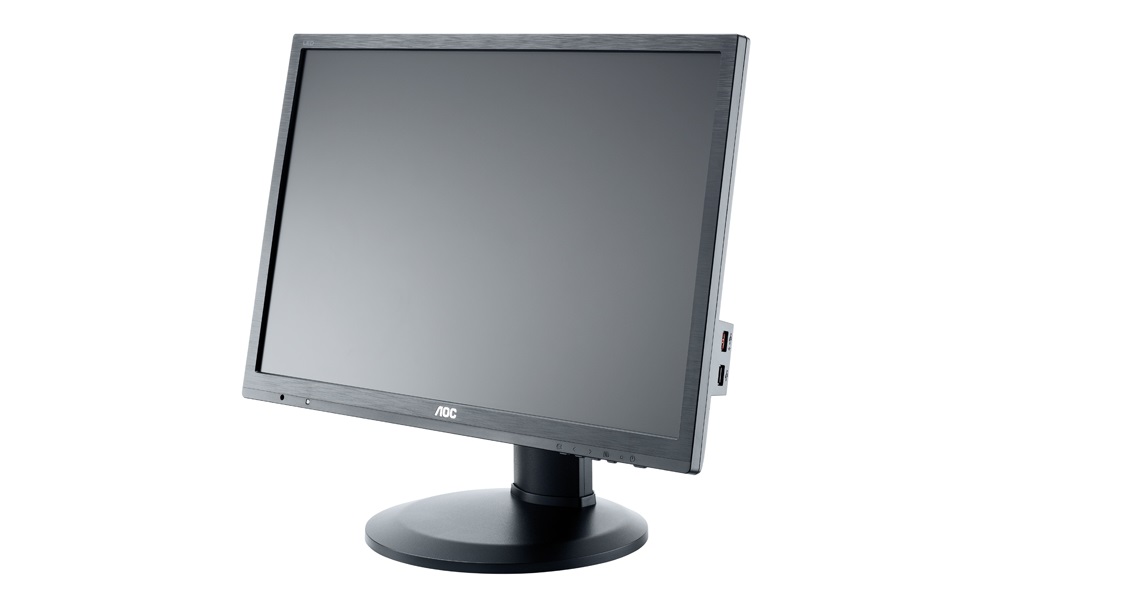TechRadar Verdict
Pros
- +
Great response time
- +
Refresh rate up to 144Hz
- +
Excellent build quality
- +
Height adjustable
- +
Charging USB port
Cons
- -
Poor viewing angles
- -
Average colour reproduction
- -
Dreadful speakers
- -
Low typical contrast ratio
- -
Mixed news as all-round screen
Why you can trust TechRadar
If you're a hardcore gamer, it's important you use the right kit. Your PC must be fast and have enough graphical welly to handle all the polygons and textures a modern, 3D game will throw at it. Your controllers must be quick and responsive, with custom options so you can configure them to suit your style of play in a given game.
And your speakers or headset must be top-drawer, with 3D sound that gives audible hints about where the enemy is. But what about the monitor?
Gaming displays often sacrifice a little high-end colour reproduction and viewing angles in favour of ultra-fast refresh rates. This one, for example, refreshes at up to 144hz, which is over twice as fast as a standard 60hz monitor (but make sure your kit can output at this rate). In a nutshell, the hertz rating measures how many times the screen refreshes itself per second.
A high refresh rate like the one offered here means you can crank up the frame rate for a much smoother gaming experience.
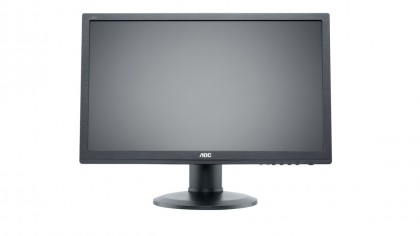
Likewise, a gaming monitor also needs a very fast response time, that is, the speed at which a pixel changes state when instructed to do so. If it's too low, a fast-moving image can leave a ghost behind, which is distracting and annoying. A display's recorded response time is defined as the time it takes a pixel to go from black (totally inactive) to white (fully active) and back again. To keep things crisp, this AOC display has a response time of just 1ms (one millisecond). In comparison, an Apple Thunderbolt Display – priced at £900, around three and a half times what the G2460PQU costs – is rated at 12ms.
The G2460P is up against some stiff competition. The BenQ XL2411T is a bargain at around £120. It refreshes at 120hz, and unlike the AOC G2460PQU reviewed here, it's 3D capable. If you're looking for an ultra-wide display, the Philips Brilliance 298X4QJAB has a 21:9 aspect ratio, and is competitively priced. If you use a Mac, you can keep it in the Apple family by going for the Apple Thunderbolt Display, which is stylish and capable, but costs almost £900.
Features
The AOC G2460PQU Gaming Monitor is built for speed. As mentioned earlier, it has a refresh rate of 144hz and a response time of 1ms, both very impressive figures. It's a 24-inch display, with an aspect ratio of 16:9. Its maximum resolution is 1920x1080, so it's ideal for full HD movies as well as your gaming needs.
The display has a brightness rating of 350cd/m2, which means it can be very bright if you turn the setting all the way up to its maximum. Naturally, you'll rarely need to do so unless you're using it in bright sunlight and for some reason, can't draw the curtains. It's based on a TN panel rather than the more recent (and more expensive) IPS display, which offers better colour reproduction and viewing angles, but isn't as quick for gamers. The monitor displays up to 16.7 million colours, but one thing it doesn't have is support for Nvidia 3D Vision, so if you like your gaming 3D, this isn't the display for you.
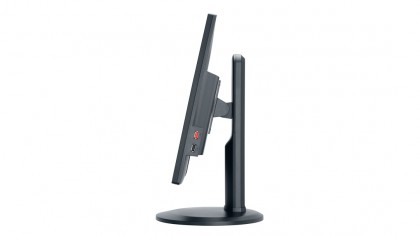
The G2460PQU has all the expected connectivity options, with D-SUB, HDMI, DVI-D and DisplayPort all catered for. As you might expect, there's also a built-in USB hub. Connect your monitor to a spare USB port on your computer, and you get four extra ports on the display to play with. They're all USB 2.0, but one of them is a high-powered port for fast-charging mobile devices. Two of them (including the fast charger) are on the side of the display, where they're ideally positioned for flash drives and other peripherals you regularly unplug and take away, with the other two found around the back. Its typical contrast ratio is 1000:1, which isn't anything to write home about, and its dynamic contrast ratio is 80,000,000:1.
Physically, the AOC G2460PQU Gaming Monitor is both robust and versatile. It has a meaty stand, with height adjustment so you can set it up at a comfortable level. You can tilt the screen back and forwards, and even swivel it up to 90% for if you want a vertical monitor. Alternatively, you can unscrew it from the stand and use it with a VESA-compatible wall mount. Controls are offered by physical buttons on the underside of the display. Its black bezel isn't as narrow as some we've seen, but it does a good job of framing the display, and is far from distracting.
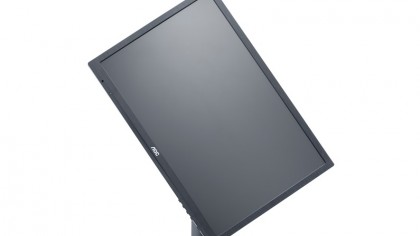
Performance
Setting up the monitor is easy. All you have to do is screw in the base unit to the stand, which is already attached to the screen. Height adjustment is equally simple, and turning the screen 90 degrees into portrait mode makes it easier to connect the cables.
The AOC G2460PQU is based on a TN panel rather than the more recent IPS technology, a factor that brings both advantages and disadvantages. The main strength of TN screens is they offer a better response time than IPS, in this case, just 1ms. This speedy response time pays dividends when playing a fast-moving game or watching a video. There's none of the ghosting you sometimes get with slower budget monitors, keeping your gaming distraction-free. The faster refresh rate is welcome too, as long as you've got the equipment to take advantage of it, and are playing a game that has a sufficient frame rate.
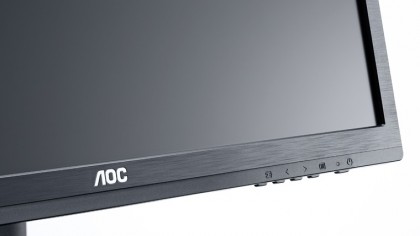
But the TN screen brings a trade-off between speed and accuracy. With a typical contrast of just 1000:1, images can appear washed out, with subdued colours and blanched dark areas. Not that it's poor as TN screens go – far from it. In fact, this is one of the better TN displays we've seen in recent years. But for colour reproduction, it just doesn't compare to a similarly-priced IPS display. It deals with gradients pretty well, though, managing to distinguish between five per cent black and pure white, and 95 per cent black and pure black. Again, maybe not as well as an IPS screen, but it still puts in a very credible performance.
As you'd expect from a TN screen, viewing angles aren't that good at all. These days, we're used to looking at our monitors from almost any direction and getting the same colour reproduction as if we were looking at it head-on, but here they shift at around 60 degrees on the horizontal plane, and almost immediately if you move up or down. This isn't too serious a problem for a gaming monitor - you'll spend your time looking straight at it while gaming, and it isn't intended for sharing media with friends and family - but it's worth bearing in mind if you're after a general-purpose display that you intend to use for gaming too.
The monitor's internal speakers are tinny, with audio reproduction lacking depth, shape and bass, but that's pretty-much the case with all budget displays. If you're going to buy a specialist monitor that's built for gaming, it makes sense to invest in a set of external speakers or a decent headset too.
Conclusion
The AOC G2460PQU Gaming Monitor sets out its intentions right there on the box – it's for gamers, through and through. As a result, it excels in areas gamers find most important, but is not so capable for all-round use.
We liked
It's great for speed. A response time of 1ms means there's no ghosting when things get intense, and if your computer – and indeed your game – has a sufficient frame rate to take advantage of its higher refresh rates, it gives a very smooth gaming experience too. Its build quality is very high, with a robust stand holding the screen exactly where you set it, even if you're prone to banging the desk after being taken out at an inopportune moment. It's height-adjustable too, and you can turn the screen 90 degrees for a portrait display. Considering it's a gaming display, we can't imagine you doing so very often, but it makes it much easier to fit the cables. We like the fact that one of its USB ports is a rapid charger for mobile devices too.
We disliked
Using a TN screen instead of an IPS one was a smart decision considering the G2460PQU is built for speed, but it takes an inevitable toll on colour reproduction. While far from poor, it can't match the quality offered by IPS displays in this respect. Viewing angles are poorer too, with colours shifting almost as soon as you tilt the screen forward or backward, and relatively soon when turning it from side to side. This isn't a display that's built for sharing. The speakers aren't up to much, but in a monitor that sells for under £250, you wouldn't expect them to be.
Verdict
The AOC G2460PQU Gaming Monitor takes a very single-minded approach to image reproduction. It grasps every opportunity to offer gamers that little bit more, but as an all-round monitor it makes a few compromises. Gamers will welcome its super-speed and snappy refresh rate, but general users might bemoan the relatively weak viewing angles and average colour reproduction when looking at static images. We can't fault it on the price, though. For under £250, you're getting a decent monitor for your money. If you're after a decent budget screen for your gaming rig, or maybe a second screen to use when playing games, it comes highly recommended. If you want a general-purpose screen for all your computing needs, it might be better to look elsewhere, as this one was never intended to be an all-round display.
